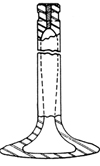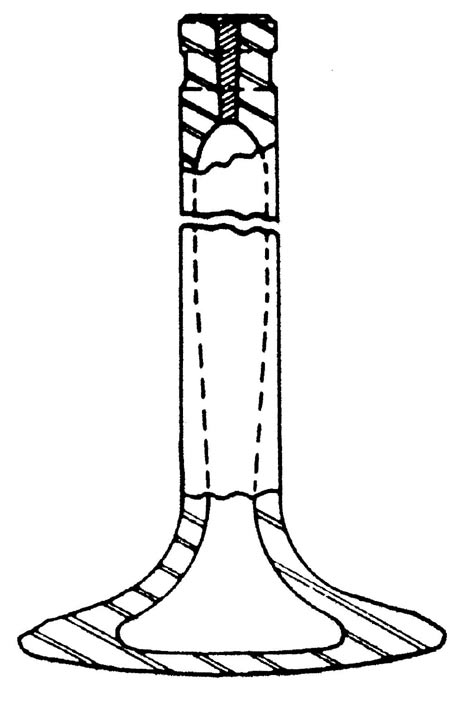Empty heads?
 There are few components in a race engine that, given a free hand in terms of design and development, we wouldn't choose to make a little lighter. However, there can also be few components in the engine where the effect of lightening is potentially more potent than the reciprocating parts of the valvetrain. In particular, 'clean sheet' engine designs allow us to fully optimise around well designed valvetrain components.
There are few components in a race engine that, given a free hand in terms of design and development, we wouldn't choose to make a little lighter. However, there can also be few components in the engine where the effect of lightening is potentially more potent than the reciprocating parts of the valvetrain. In particular, 'clean sheet' engine designs allow us to fully optimise around well designed valvetrain components.
Production car makers have long realised the benefits of low valvetrain mass. Low-mass valves and associated components require lighter springs to control the valve; these springs are shorter and therefore the camshaft height can be reduced. A smaller, lighter engine needs a smaller and lighter support structure and so the valvetrain mass reduction 'permeates' throughout the design of a new car to allow a significantly lower vehicle mass.
In a race engine, our primary target is more often performance than overall engine and vehicle mass reduction. Within an engine of essentially fixed mass, an effort to reduce valvetrain mass is still well rewarded by the ability to reduce friction a little, or to maintain a satisfactory level of valve control while using valve lift profiles with higher rates of acceleration. Certainly any friction reduction resulting from running lighter springs is welcome, but the real gains are likely to be the result of new valve lift profiles.
When we have exhausted the possibilities for lightening the stem by drilling, and have taken advantage of the optimum materials for our design, what options are left? Well, we can look to the remaining significant solid mass and reduce its weight. Hollow-headed valves are not new - the concept is older than most of us reading this (unless you are extremely ancient). Their original use was for sodium-cooled valves. The internal cavity, which was joined to the hollow stem, allowed the sodium to remove much more heat from the head of the valve than was possible using a drilled stem alone. However, in more recent times, their application to modern bespoke race engines has been limited by regulation on one hand, and by cost on the other.
NASCAR prohibits the use of hollow-headed valves, and it is possibly in NASCAR that the best use could be made of such a regulation, where the valves are physically large. In Formula One, where many avenues of technical development have been barred, hollow-head valves have remained a possibility; the only obstacle to their use has been the 'cut-off' provided by the homologated engine regulations. Engine makers that didn't have them when the engines were 'frozen' would find it hard to convince the FIA to allow them on grounds of cost-saving or reliability.
As the valve size becomes smaller, the technical difficulties of making an equivalent percentage mass saving are increased, as geometric similarities mean that wall thicknesses are decreased. The basic strategy of hollow-valve production is to machine the combustion side of the valve, and then weld a closing plate (or plates) in place before finish machining the valve. The methods of achieving a good weld need to be carefully considered. Laser welding, electron-beam welding and diffusion bonding would all seem to be good candidates for producing high-quality joints.

As we can imagine, the costs involved in producing such labour-intensive valves are considerable. There are a number of extra machining operations compared to a conventional valve, and there is a requirement for considerable investment in welding equipment and trained employees to use it. As such, even in race series where these items remain with the regulations, their use is very likely to be limited, if they are used at all. The number of valve manufacturers who are able to produce such components is naturally also limited by the size of the market for these items.
It should be noted though that the advantage of hollow-headed valves has not escaped the attention of roadcar manufacturers. At least one large manufacturer of poppet valves is working on hollow-head valves for road vehicles. The development doesn't take head-hollowing to the extremes that bespoke race valves would, and aims to increase valve cooling efficiency rather than presenting an avenue for performance development.
Fig. 1 - Hollow-headed valves are not a new concept; this shows a typical aerospace design used decades ago
Written by Wayne Ward